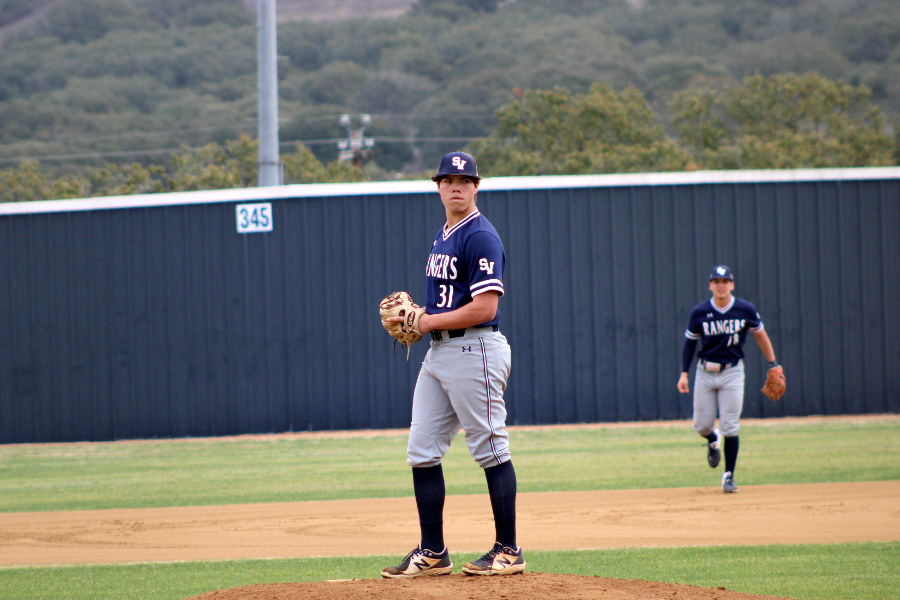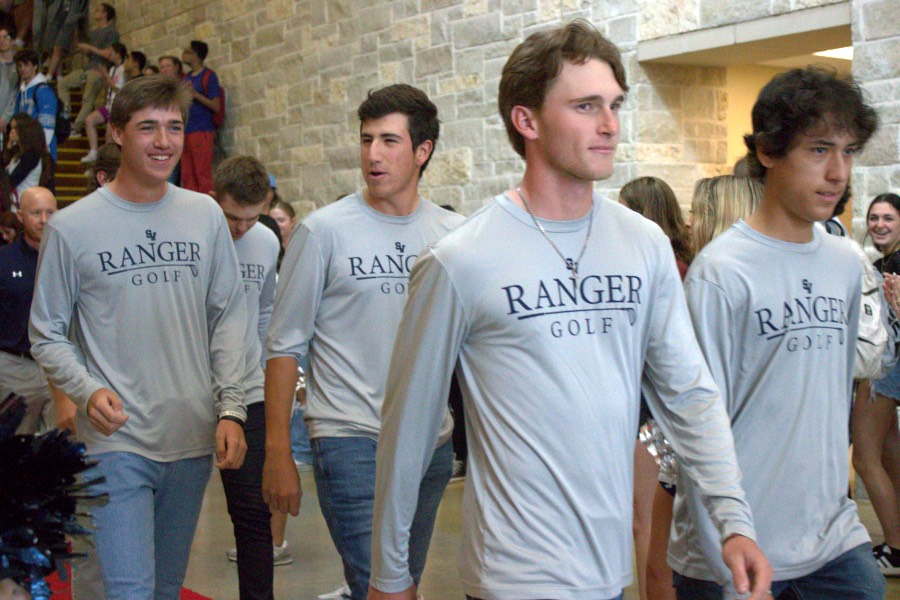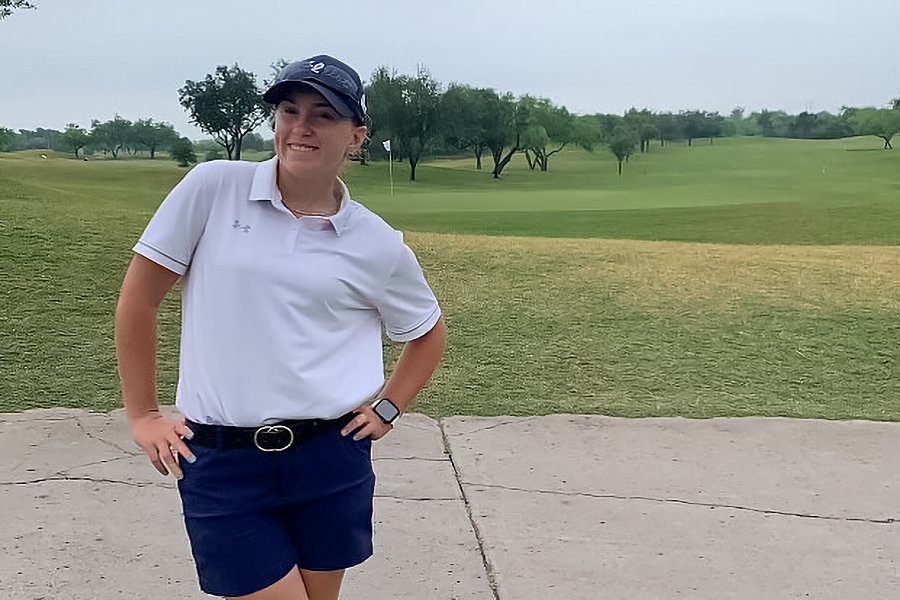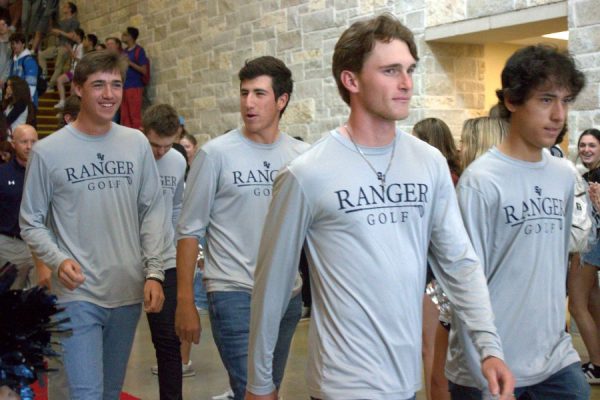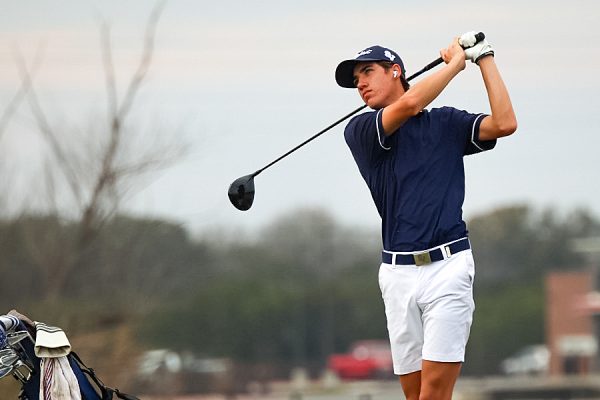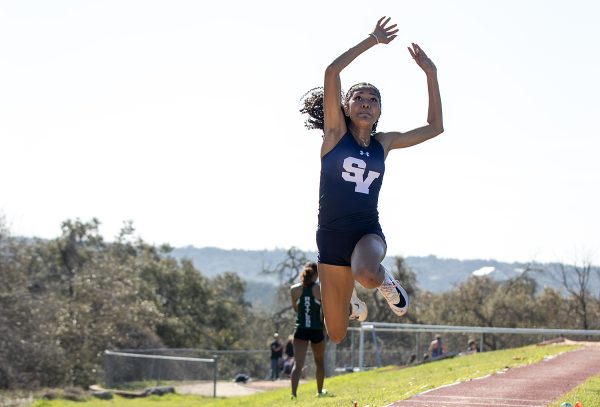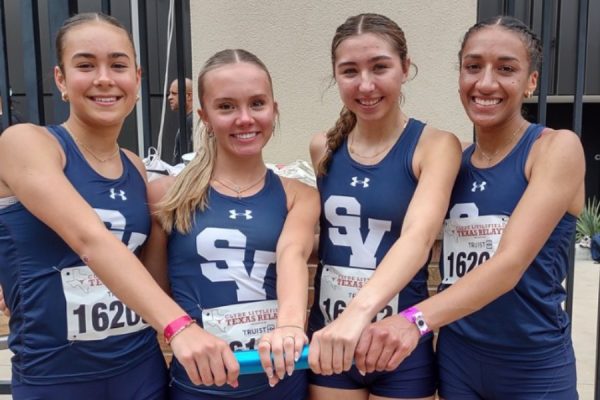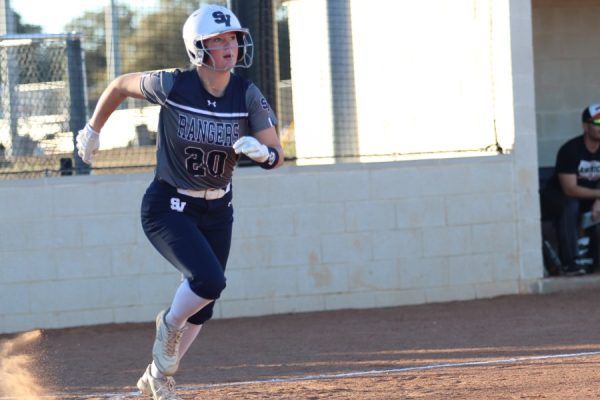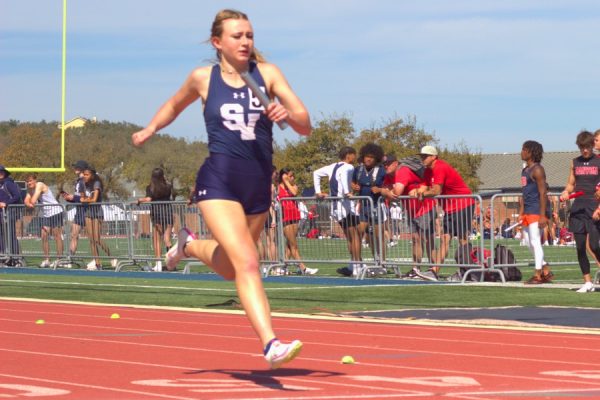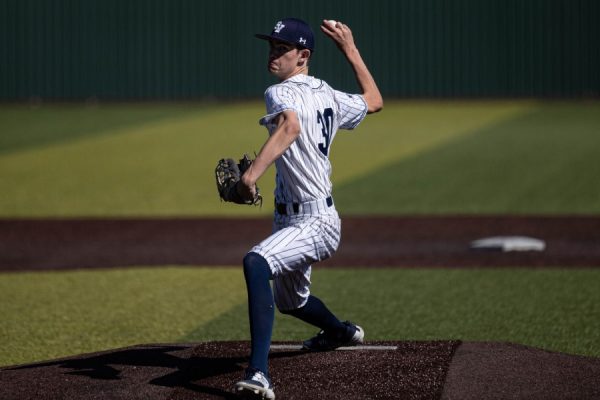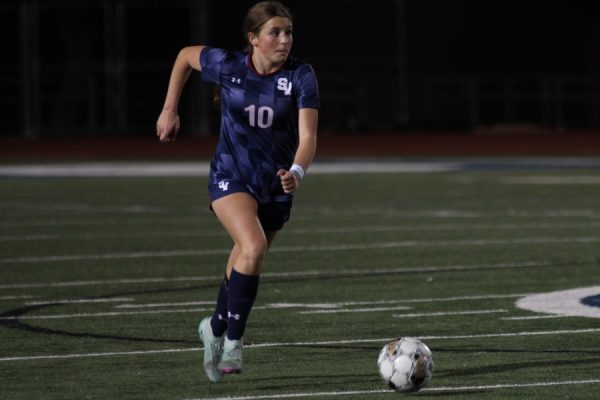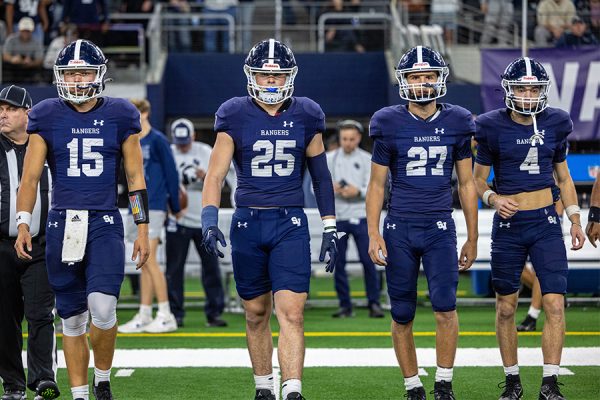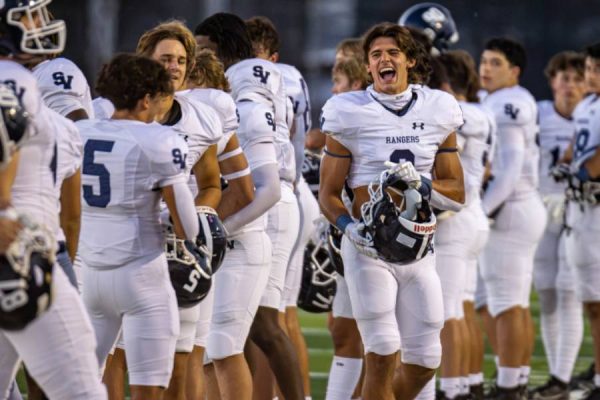Samplesize me
Despite offensive struggles, baseball rolls to second round of playoffs
Sophomore pitcher MJ Espinoza winds up against Madison on March 4. Espinoza pitched 4.1 scoreless innings across two appearances against Churchill.
May 11, 2022
After finishing a dominant regular season 24-4, it would’ve been easy to overlook baseball’s bi-district playoff series against Churchill, the fourth-place team from District 28-6A. But the Chargers gave the Rangers everything they could handle, and it took a fifth-inning rally in the deciding Game 3 to send the Rangers on to the second round.
The matchup’s most notable storyline was unquestionably the Ranger offense, which fell uncharacteristically quiet throughout the series: in three games, the team managed just seven runs, their fewest in any three-game stretch since February 2020.
Four of the Rangers’ first five batters – Kasen Wells, Tim Arguello, David DeHoyos and Ethan Gonzalez – combined for 10 of the Rangers’ 14 hits in the series. The rest of the team, meanwhile, combined to hit just 4/33 with four walks and 13 strikeouts.
The Rangers still managed to reach base on more than a third of their plate appearances, thanks in part to four HBPs in Game 3, but the overall offense still struggled. In 28 regular season games, the team slashed .371/.482/.594; but against Churchill, that line dropped to .209/.338/.224.
While it is true that this sample is unrepresentative of the Rangers’ talent level and larger body of work this season, the issue remains that the postseason is necessarily a product of small sample-size variance. A mediocre team playing beyond its means can make the state tournament, but the flip side of that is that a single off day could sink even the best team in the state.
And yet, despite the slow start, there are signs that point to positive regression for the Rangers, notably including a season’s worth of evidence of good plate discipline. In the regular season, the offense racked up nearly as many walks as strikeouts (127 BB, 133 K), but that wasn’t the case against Churchill (8 BB, 19 K). If the team can return to its regular season levels against Austin Westlake, there will be plenty more opportunities to make plays on the basepaths.
The Charger pitching staff also held the Rangers far below their regular season extra-base hit rate. After hitting 3.57 XBHs per game in the regular season, they managed just one in three games against Churchill, a figure which is unlikely to repeat itself this weekend.
The Rangers’ pitching performance serves as yet another positive sign, but for a different reason. The staff overcame four errors – another stat due for correction – to allow just two earned runs in the entire series, including two combined shutouts. And they managed to do so even without the high strikeout rates which characterized so much of their earlier success.
But while a positive regression seems likely, the question remains: in high school sports, when does a sample size become representative? It’s a question that’s nearly impossible to answer. Take Westlake as a recent example. With a 1-0 series deficit, they trailed Vista Ridge 9-1 in the sixth inning of Game 2. But the Chaparrals mounted an incredible comeback, outscoring their opponents 24-3 over the next 10 innings to advance to the second round.
It’s an inspiring story, and one that evokes its own questions about sample size and momentum. In a study of 50 years of Major League Baseball games, Tom Tango found that even “extreme” momentum swings – games in which the losing home team scored five or more runs in a single inning to tie the game – had a negligible impact on winning.
But that study only surveyed individual games, rather than longer winning streaks. And that medium-term success is arguably a more common side effect of momentum, particularly at the high school level. Just last season, Houston Strake Jesuit made an improbable run to the state tournament after finishing the regular season third in its own district.
This Thursday, Smithson Valley and Westlake – two high-level teams marked by high sample-size variance – will butt heads, with the Rangers traveling to Austin to face their toughest test yet. North East Sports Park is set to host Game 2, and a potential Game 3 would take place at Dripping Springs. Online tickets for Game 1 are available to purchase here.

